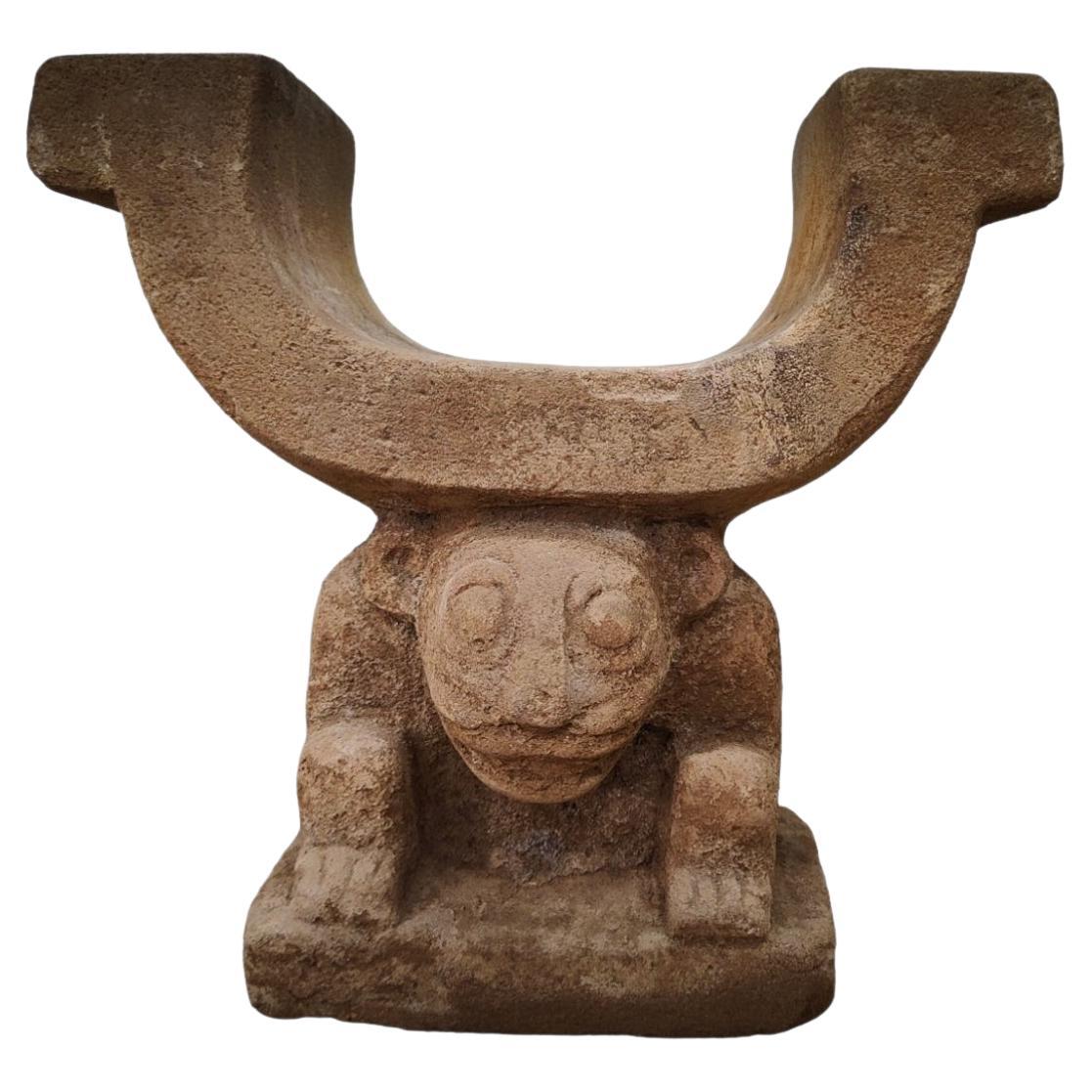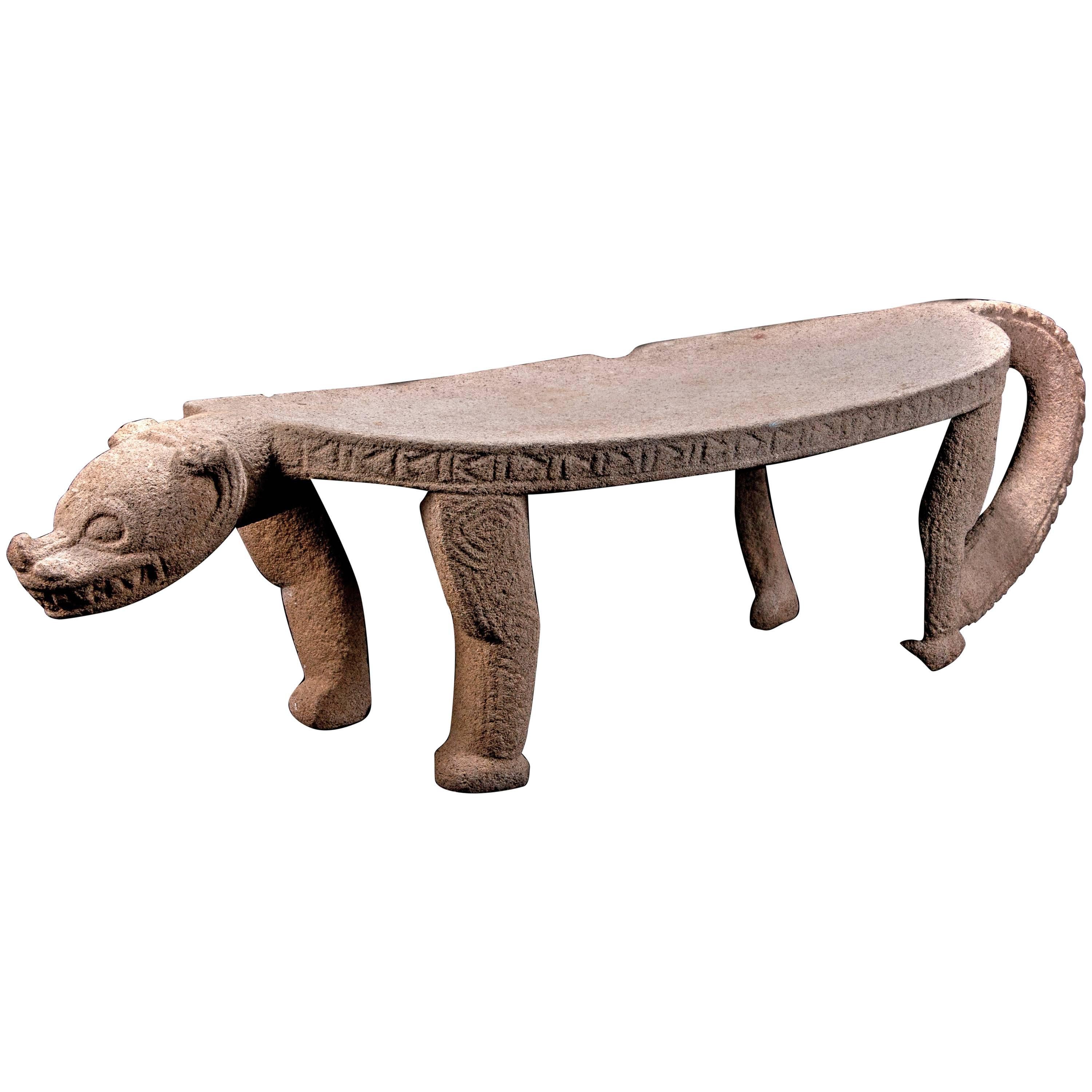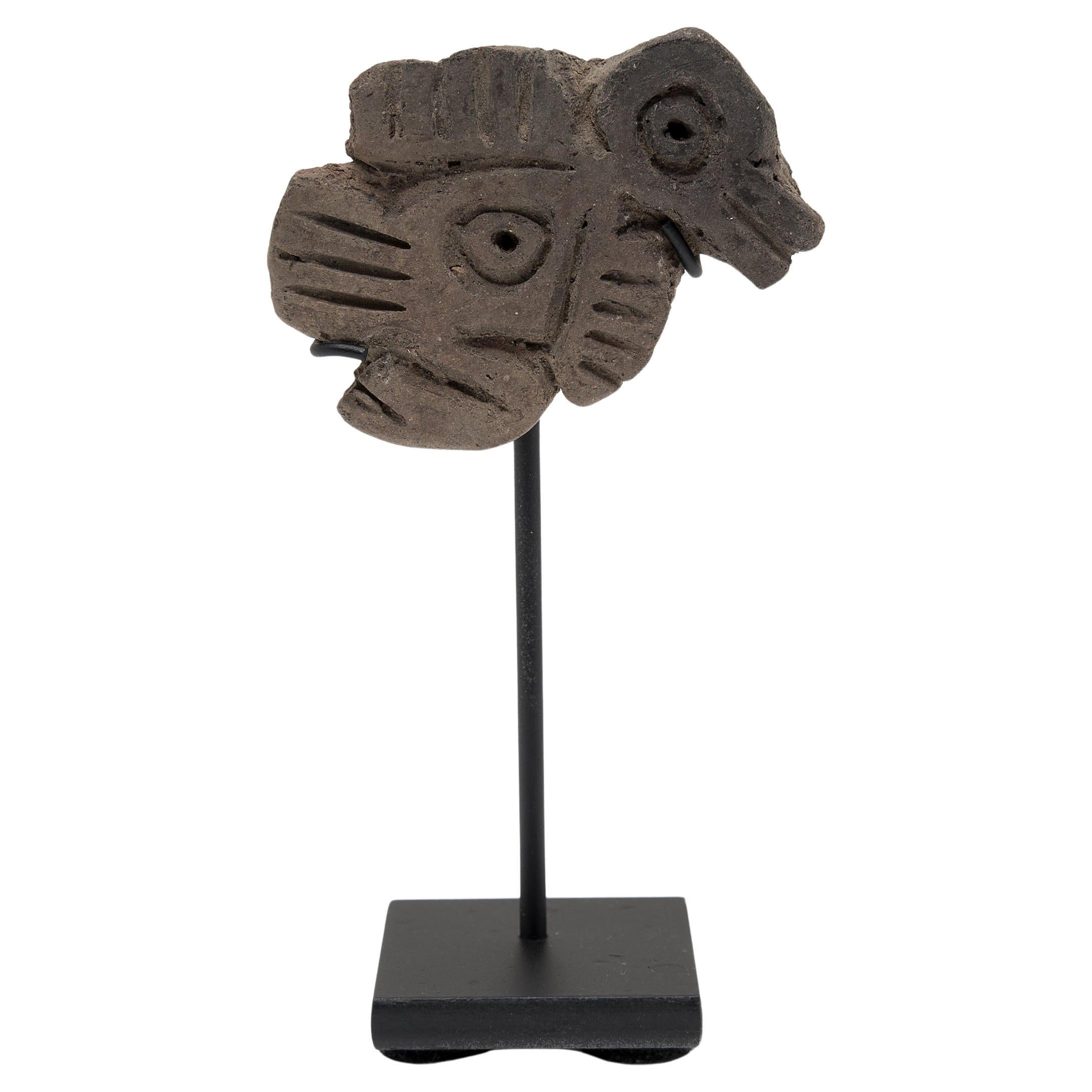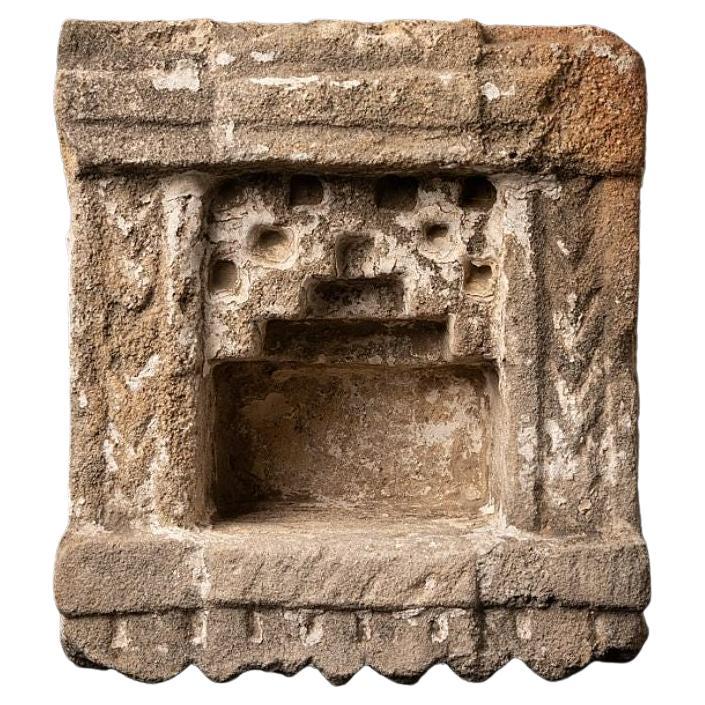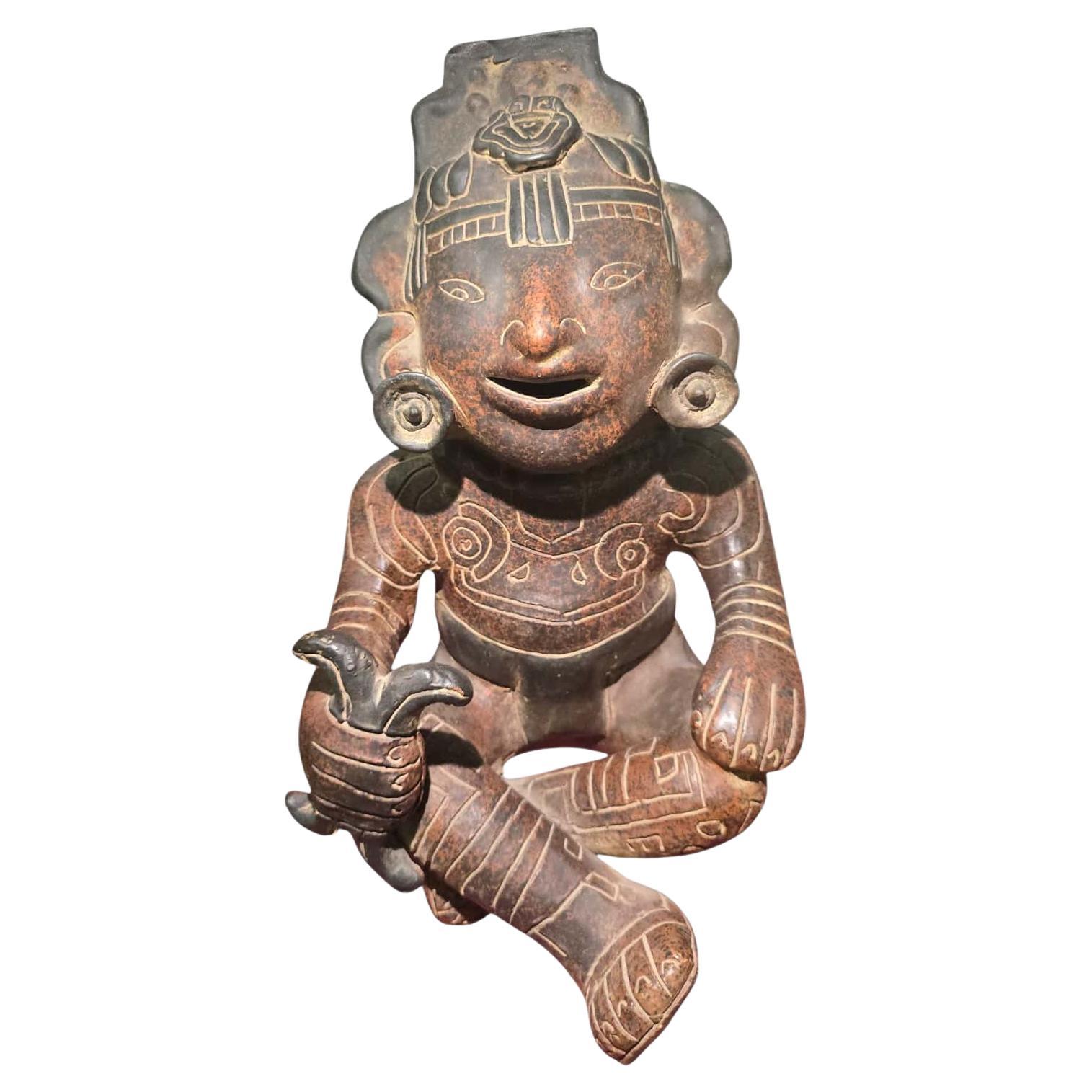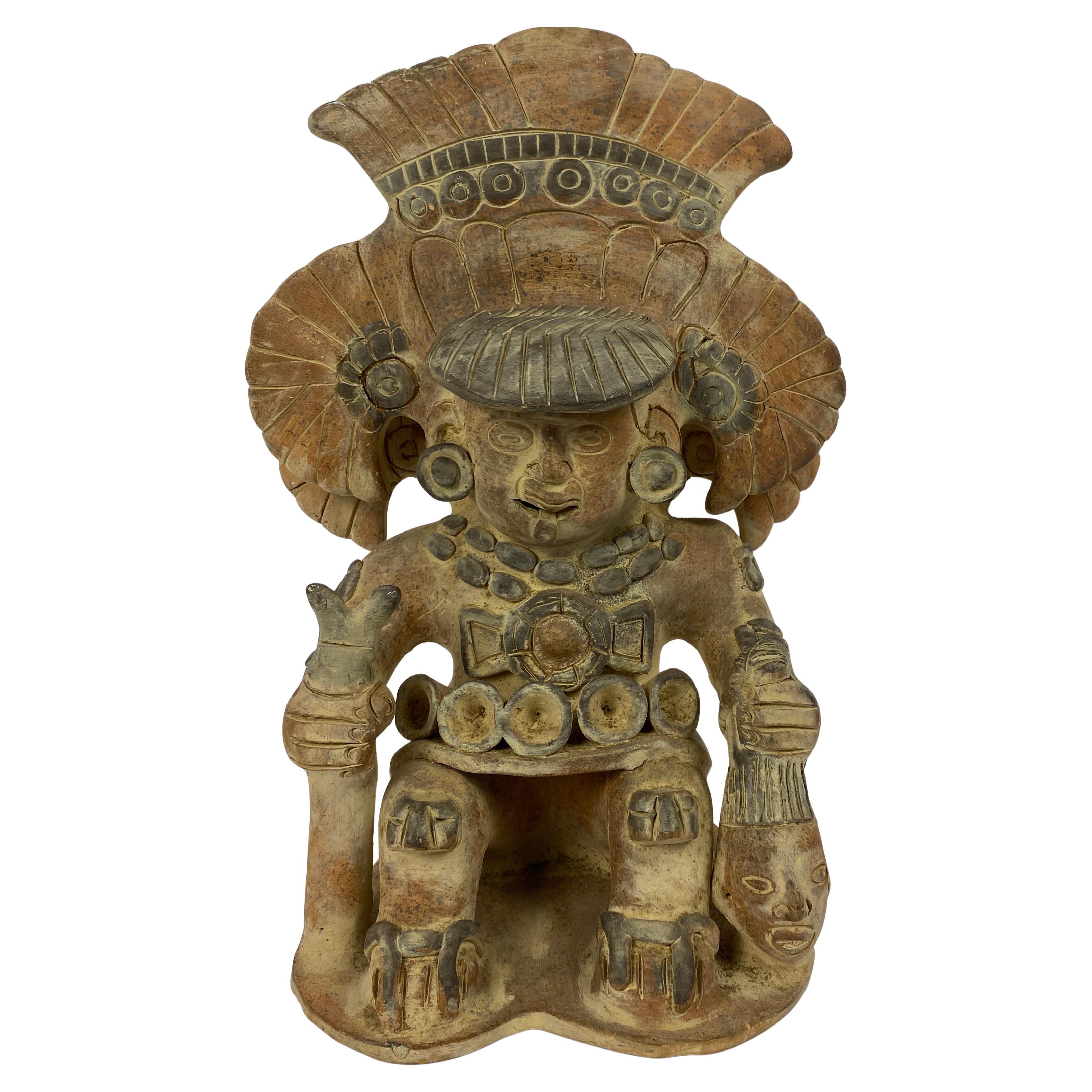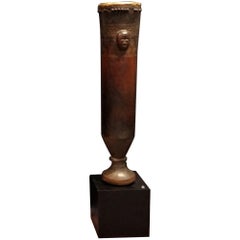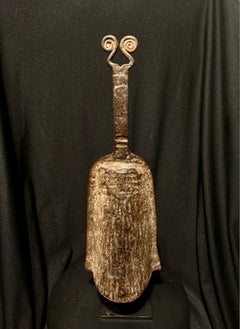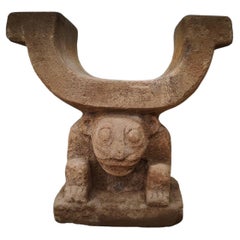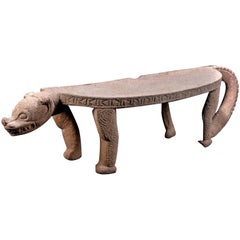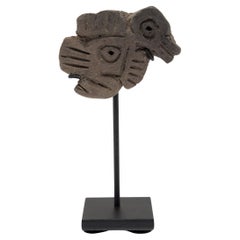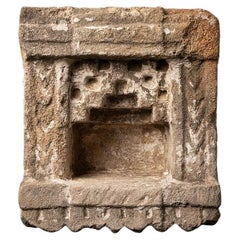Items Similar to World-Class Maya Cormorant Throne Panel W/ Pre-1970 UNESCO-Compliant Provenance
Video Loading
Want more images or videos?
Request additional images or videos from the seller
1 of 8
World-Class Maya Cormorant Throne Panel W/ Pre-1970 UNESCO-Compliant Provenance
$75,000
£56,690.71
€65,147.71
CA$104,437.04
A$116,181.93
CHF 60,904.02
MX$1,419,714.77
NOK 775,536.73
SEK 730,060.54
DKK 486,302.85
Shipping
Retrieving quote...The 1stDibs Promise:
Authenticity Guarantee,
Money-Back Guarantee,
24-Hour Cancellation
About the Item
This World-Class sculpted stone panel is an example of the pinnacle of Maya stone carving.
It depicts the head of a cormorant in profile, with a long hooked beak, curved tongue, large central eye, clouds above, spiraling watery elements below, and deeply carved feathers on the back of the head
The cormorant is a large and powerful bird( See the image of a cormorant in the photo section) that was particularly noted because of its astounding skill at diving deeply below the waves, referencing its mythological ability to connect to the Watery Realms of the Underworld.
It was associated with Maya kingship, since it was considered to be a master of the three Realms which are depicted here; the spiral and wave-like elements represent the watery realm of the underworld, the earthly realm is represented by the cormorant itself and its feathers, and the heavenly realm by the three clouds above. You find cormorants depicted on many important painted and molded vessels. Maya kings identified with the cormorant because they wanted to reinforce the idea that they also were Masters of the Three Realms.
The panel has holes in the top two corners for suspension which are worn down from hanging. It is impossible to prove that it was attached to a throne, but it was certainly connected to the court of a king, because only a king would have been able to utilize a sculptor of this skill.
The carving is world class. Note the masterful placement of all the elements in such a limited space, the flowing lines of the water and the depth of the feathers on a piece that is only 2" deep.
Provenance - This Comes from an early Los Angeles collection, and was acquired before 1970.
Authentication - By the noted Pre-Columbian Scholar Hasso von Winning. (See his attached paper, dated Oct. 14, 1969.)
Note - There is a small old price sticker still attached to the back.
- Dimensions:Height: 4.5 in (11.43 cm)Width: 15 in (38.1 cm)Depth: 2 in (5.08 cm)
- Style:Pre-Columbian (Of the Period)
- Materials and Techniques:
- Place of Origin:
- Period:
- Date of Manufacture:early Classic Period, Ca 300 A.D.
- Condition:Wear consistent with age and use. Excellent condition with no breaks or restoration.
- Seller Location:Culver City, CA
- Reference Number:1stDibs: LU8673238818692
About the Seller
No Reviews Yet
Vetted Professional Seller
Every seller passes strict standards for authenticity and reliability
Established in 1978
1stDibs seller since 2023
- ShippingRetrieving quote...Shipping from: Culver City, CA
- Return Policy
Authenticity Guarantee
In the unlikely event there’s an issue with an item’s authenticity, contact us within 1 year for a full refund. DetailsMoney-Back Guarantee
If your item is not as described, is damaged in transit, or does not arrive, contact us within 7 days for a full refund. Details24-Hour Cancellation
You have a 24-hour grace period in which to reconsider your purchase, with no questions asked.Vetted Professional Sellers
Our world-class sellers must adhere to strict standards for service and quality, maintaining the integrity of our listings.Price-Match Guarantee
If you find that a seller listed the same item for a lower price elsewhere, we’ll match it.Trusted Global Delivery
Our best-in-class carrier network provides specialized shipping options worldwide, including custom delivery.More From This Seller
View AllLate 19th Cent. Kuba Drum W Honey Brown Patina - Harry Franklin Collection
Located in Culver City, CA
A tall and elegant wood pedestal drum with a fully-carved face on the side, and two registers of incised linear designs above and below. It has an absolutely gorgeous honey-brown pa...
Category
Antique Late 19th Century Congolese Tribal Figurative Sculptures
Materials
Wood
$7,840 Sale Price
34% Off
Benin Iron Striker Bell
Located in Culver City, CA
An elegant Benin Iron Striker Bell with a double spiral finial on the top, and a lovely bell-shaped body. This is an extremely fine example of the African blacksmiths artistry. Kingd...
Category
Antique Late 19th Century African Tribal Mounted Objects
Materials
Iron
$1,500
You May Also Like
Manteña Chair of Power Cachique of Prehispanic Ecuador 900 AD
Located in Madrid, ES
MANTEÑA CHAIR OF POWER CACHIQUE OF PREHISPANIC ECUADOR
The chair has been carved from a block of
detrital sedimentary rock, in which fossil remains can be seen. It is a calcarenite o...
Category
Antique 15th Century and Earlier Animal Sculptures
Materials
Stone
$46,472 Sale Price
20% Off
Published Pre-Columbian Nicoya Ceremonial Stone Seat, Ex Arizona Museum
Located in San Pedro Garza Garcia, Nuevo Leon
Nicoya Ceremonial Basalt Stone Seat in Shape of a Jaguar. Published in the Arizona Museum.
This large and finely carved example of Costa Rican skill and craftsmanship is in the form of a jaguar which may have been a lineage or clan symbol - as also was the crocodile - according to 16th-century Spanish conquistadors. There are so many features that make this masterpiece so unique. The most realistic depiction is the face with its head captured in a pose that is threatening and fierce.
Sculptors in ancient Central America developed elaborate metate forms that were associated with high status and wealth. They were commonly placed within graves of prominent individuals. Certain ancient rituals must have incorporated this activity and required special metates to be created for this purpose. It may have also served as a throne for the ruler, for whom the assurance of the fertility of his land and people would have been paramount.
Even today, stone metates...
Category
Antique 15th Century and Earlier Pre-Columbian Animal Sculptures
Materials
Stone
Maya Bird Sello Stamp
Located in Chicago, IL
Stamps, or sellos, such as this one were common during the pre-Columbian period in Mesoamerica and most popular during the Formative Period that spanned the years between 1200-800 B....
Category
Antique 15th Century and Earlier Mexican Pre-Columbian Animal Sculptures
Materials
Ceramic
Antique sandstone shrine from India from India
Located in DEVENTER, NL
Material: Sandstone
Material: wood
23 cm high
20,6 cm wide and 12 cm deep
Weight: 7.984 kgs
Originating from India
19th century
Category
Antique 19th Century Indian Sculptures and Carvings
Materials
Wood
Large Decorative Pre-Columbian Style Figure – 20th Century
Located in Madrid, ES
Impressive Pre-Columbian style figure from the 20th century, crafted in homage to ancient Mesoamerican art. The piece showcases stylized facial features and traditional ornamentation...
Category
Vintage 1950s Figurative Sculptures
Materials
Terracotta
Pre-Columbian Style Mexican Terracotta Statue, Molded Clay Figurative Sculpture
Located in Miami, FL
Vintage, decorative and well-proportioned Mexican primitive figure depicting a man seated, with detailed, patterned clothing. The sculpture measures
16 1/4" High x 12" wide x 9 1/2"...
Category
20th Century Mexican Pre-Columbian Figurative Sculptures
Materials
Clay
$1,520 Sale Price
20% Off
